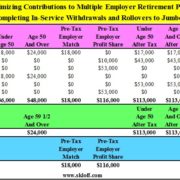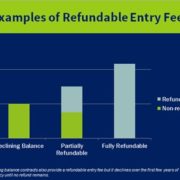John Hancock LifeCare Hybrid Life and Long Term Care Insurance Review – Long Term Care University

Long Term Care University – Question of the Month – 03/15/25
By Aaron Skloff, AIF, CFA, MBA
Q: We read the Long Term Care University article ‘Traditional Versus Hybrid Life and Long Term Care Insurance’ and prefer the Hybrid Long Term Care Insurance (LTC) policy. Can you please review the John Hancock LifeCare Hybrid LTC policy?
Overview. John Hancock, an A.M. Best A+ rated, founded in 1862. The John Hancock LifeCare policy is a Hybrid Life and Long Term Care Insurance (also called Combination or asset based) policy. With Traditional LTC policies, premiums can be increased and you may not receive any benefits if you do not need LTC. With Hybrid LTC policies the benefits and premiums are guaranteed. The insurance company either: 1) pays you if you need LTC, 2) pays your heirs if you do not need LTC, 3) pays you and your heirs if you need a modest amount of LTC or 4) pays you a refund if you cancel the policy.
Click Here for Your Long Term Care Insurance Quotes

John Hancock LifeCare is Unique Because it is a Cash Indemnity or Reimbursement Policy. There are two primary benefit payment methods among LTC policies. Reimbursement policies, the most common type of policies, require you to submit documentation of all expenses for reimbursement up to your monthly LTC benefits. Upon receipt of qualified expenses, John Hancock will pay up to the maximum monthly benefit amount, even if it exceeds the IRS per diem limit in the year. Cash Indemnity policies pay up to your monthly LTC benefits, regardless of your expenses, up to the IRS per diem limit in the year.
John Hancock LifeCare is Unique Because It is an Indexed Universal Life Insurance Policy Offering the Option to Link Policy Values to Major Market Indices. With most LTC policies you choose a fixed inflation protection growth rate (e.g.: 3% or 5% compound). With John Hancock LifeCare you can choose a fixed inflation protection of 5%, a fixed account with a minimum guaranteed rate of 1% or one linked to financial market indices (indexed). Benefit amounts have the potential to increase with market gains up to an annual maximum growth rate (cap) but will never drop below the policy’s original amounts. You can choose to track one or more of the S&P 500 Index (Select Capped or High Capped) or Barclays Global MA Index
John Hancock LifeCare. The policy options include: Benefit periods of 2, 4 or 6 years; Inflation protection of 5% compound or indexed; Elimination period of 90 days; Terminal illness benefit 50% of your policy’s face amount; Cash surrender value varies by benefit design and inflation protection option selected. John Hancock Vitality PLUS (Healthy Engagement Benefit rider) increase the policy’s death benefit and LTC benefit based on you taking healthy actions.
John Hancock LifeCare Policy Premium Payment Options. They include: one time (single-pay), 5-pay, 10-pay and 15-pay.
How John Hancock LifeCare Compares with Other Hybrid LTC Policies. Let’s look at a husband and wife, Bill and Sue, who are each 55 years old and reside in Maryland. They each pay a $100,000 one-time premium ($200,000 combined with Nationwide Carematters Together and OneAmerica State Life Asset Care) and are expected to need LTC in 25 years at the age of 80. They are comparing Hybrid policies that offer the largest LTC benefits with inflation protection included in the premium (unless noted otherwise). They prefer Cash Indemnity (reimbursement policies in blue, cash indemnity policies in green in the chart below).
John Hancock LifeCare Underperforms Most Competitors on a Guaranteed Basis with Lower Monthly and Total LTC Benefits. Bill will have $3,572 monthly and $257,177 total LTC benefits, while Sue will have $2,960 and $213,113, respectively. Brighthouse SmartCare is a strong cash indemnity alternative for Bill and Sue due to its high monthly and total LTC benefits, and its option to link policy values to major market indices. Lincoln MoneyGuard Fixed Advantage is a strong (primarily reimbursement) alternative Bill and Sue due to its high monthly LTC benefits to its 0 day elimination period. Nationwide Care Matters II is a strong cash indemnity alternative for Bill and Sue due to its high monthly and total LTC benefits and its 90 day with zero day retroactive elimination period. Nationwide CareMatters Together is a strong cash indemnity alternative for Bill and Sue due to its high monthly LTC benefits and its 90 day with zero day retroactive elimination period. OneAmerica State Life Asset Care is a strong alternative due to its unlimited, lifetime total LTC benefits. Securian Minnesota Life SecureCare III is a strong cash indemnity alternative for Bill and Sue due to its high monthly and total LTC benefits.
Click to Enlarge
Conclusions. John Hancock LifeCare provides low monthly and total LTC benefits and has the option to link policy values to market indices, with the flexibility of formal and informal care providers (including family and friends). Since premiums vary greatly based on age, health and marital status, request individualized quotes.
Aaron Skloff,, Accredited Investment Fiduciary (AIF), Chartered Financial Analyst (CFA) charter holder, Master of Business Administration (MBA), is the Chief Executive Officer of Skloff Financial Group, a Registered Investment Advisory firm. The firm specializes in financial planning and investment management services for high net worth individuals and benefits for small to middle sized companies. He can be contacted at www.skloff.com or 908-464-3060.












